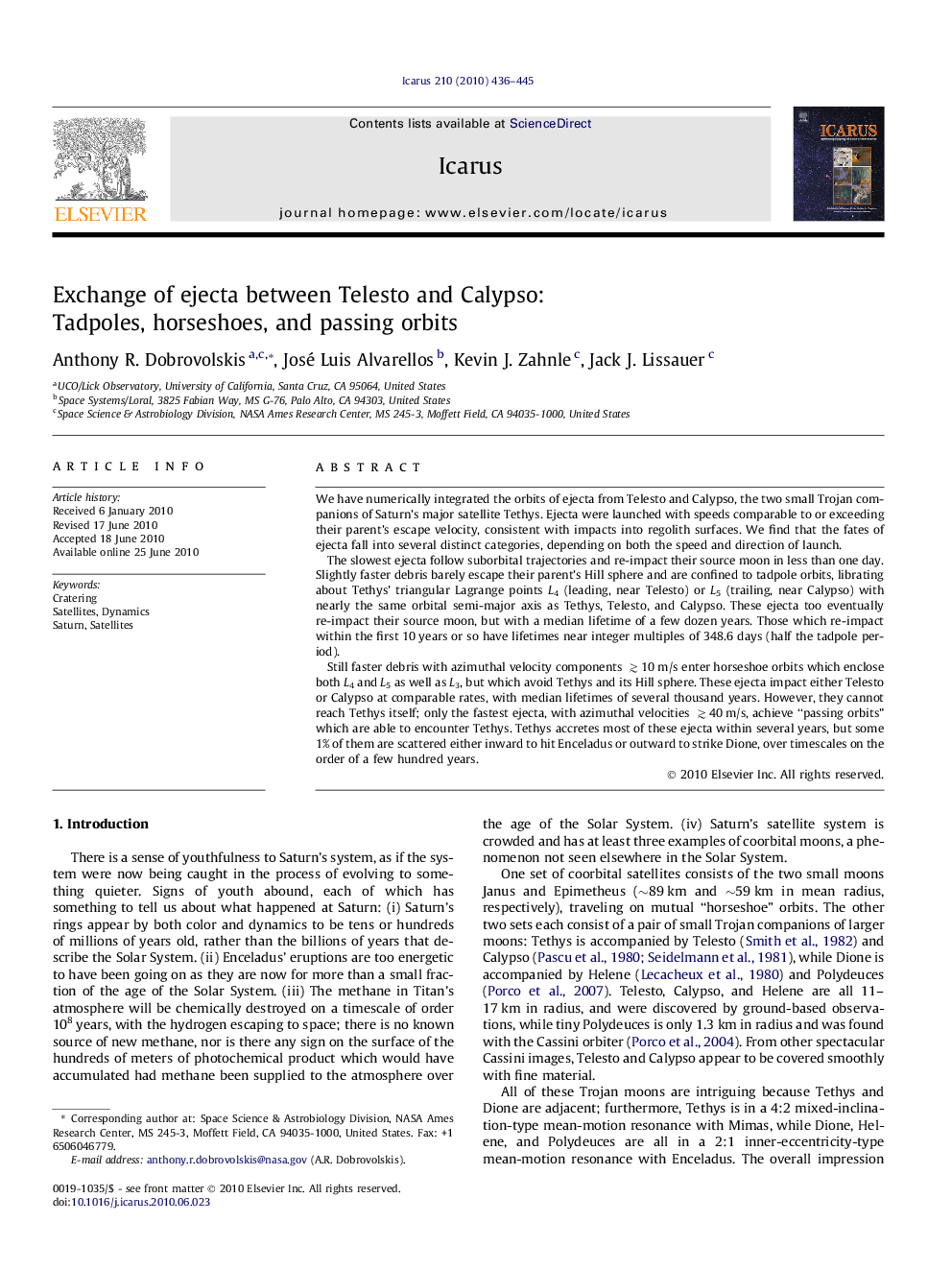| Article ID | Journal | Published Year | Pages | File Type |
|---|---|---|---|---|
| 1774169 | Icarus | 2010 | 10 Pages |
We have numerically integrated the orbits of ejecta from Telesto and Calypso, the two small Trojan companions of Saturn’s major satellite Tethys. Ejecta were launched with speeds comparable to or exceeding their parent’s escape velocity, consistent with impacts into regolith surfaces. We find that the fates of ejecta fall into several distinct categories, depending on both the speed and direction of launch.The slowest ejecta follow suborbital trajectories and re-impact their source moon in less than one day. Slightly faster debris barely escape their parent’s Hill sphere and are confined to tadpole orbits, librating about Tethys’ triangular Lagrange points L4 (leading, near Telesto) or L5 (trailing, near Calypso) with nearly the same orbital semi-major axis as Tethys, Telesto, and Calypso. These ejecta too eventually re-impact their source moon, but with a median lifetime of a few dozen years. Those which re-impact within the first 10 years or so have lifetimes near integer multiples of 348.6 days (half the tadpole period).Still faster debris with azimuthal velocity components ≳10 m/s enter horseshoe orbits which enclose both L4 and L5 as well as L3, but which avoid Tethys and its Hill sphere. These ejecta impact either Telesto or Calypso at comparable rates, with median lifetimes of several thousand years. However, they cannot reach Tethys itself; only the fastest ejecta, with azimuthal velocities ≳40 m/s, achieve “passing orbits” which are able to encounter Tethys. Tethys accretes most of these ejecta within several years, but some 1% of them are scattered either inward to hit Enceladus or outward to strike Dione, over timescales on the order of a few hundred years.
